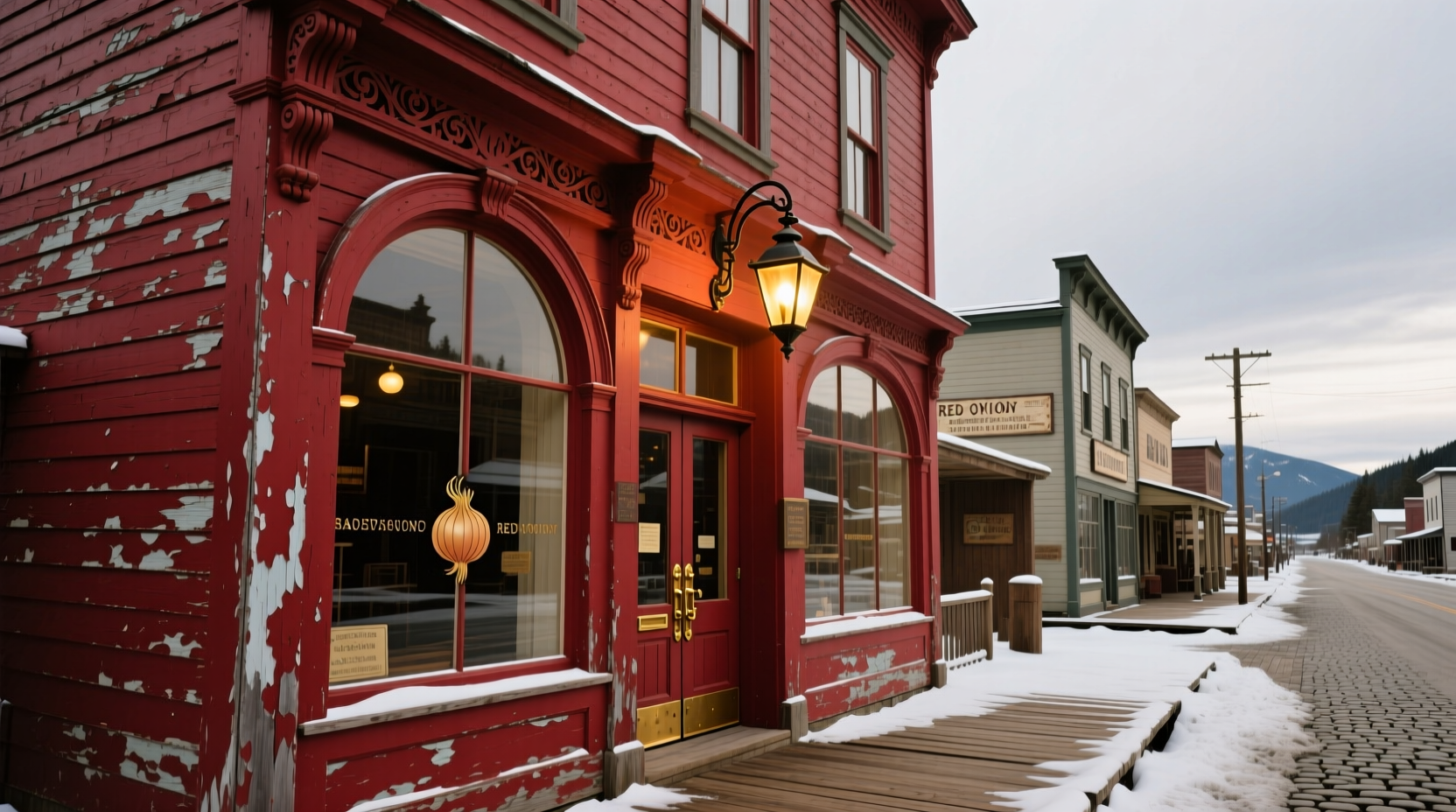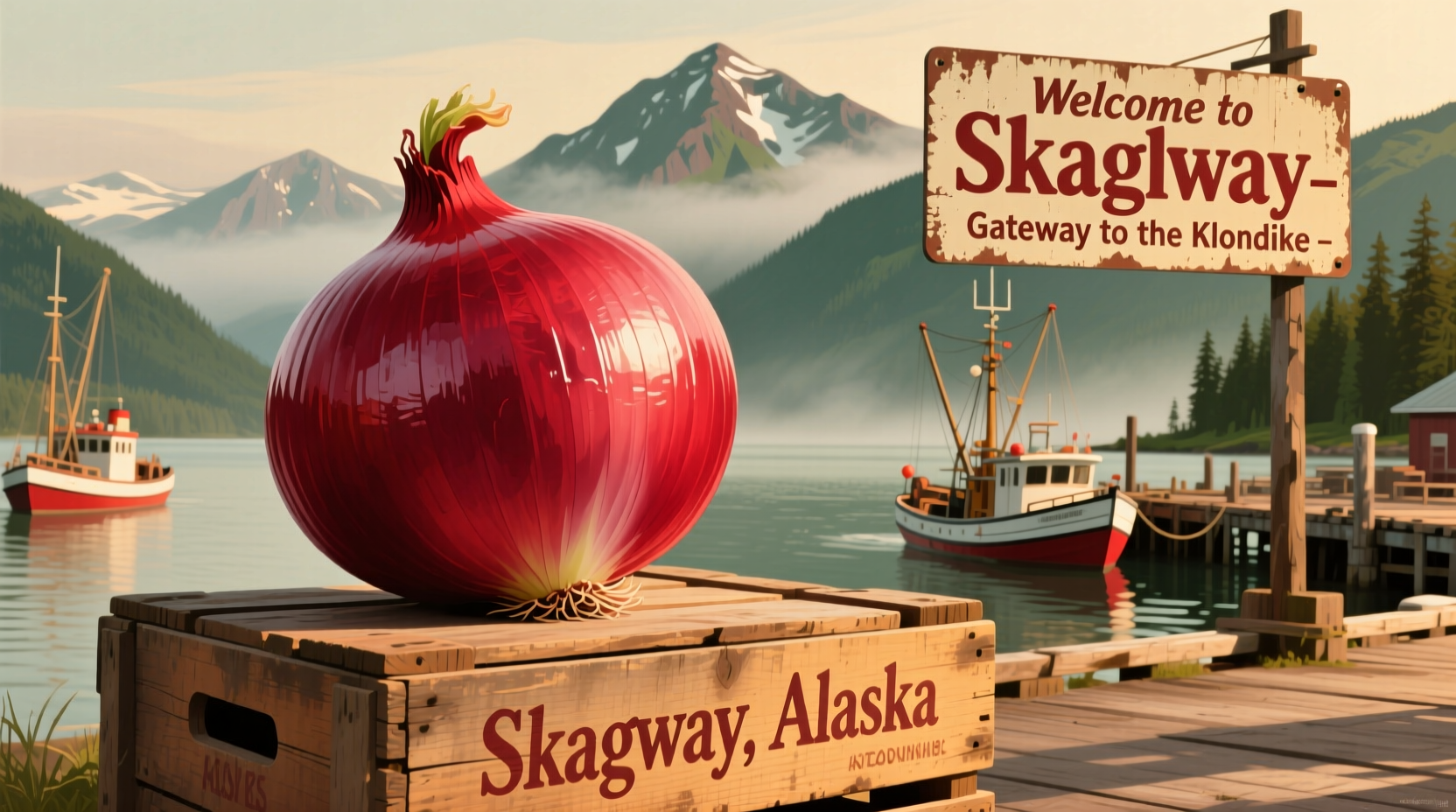If you're planning an Alaskan adventure or researching Klondike Gold Rush history, understanding The Red Onion's significance provides valuable context for your journey. This iconic Skagway landmark offers more than just a pretty facade—it represents the vibrant, sometimes rowdy, spirit of the Gold Rush era that shaped modern Alaska.
What Exactly Is The Red Onion in Skagway?
The Red Onion isn't a vegetable market or grocery store as the name might suggest to modern visitors. Instead, it's one of Skagway's most famous historic buildings, constructed in 1898 during the height of the Klondike Gold Rush. Located at 111 Broadway in downtown Skagway, this distinctive red building with white trim served multiple purposes throughout its history.
Originally established as a saloon and "parlor house" (a euphemism for a brothel), The Red Onion catered to the thousands of prospectors passing through Skagway on their way to the gold fields of Canada's Yukon Territory. Unlike many temporary Gold Rush structures, The Red Onion was built with quality materials and craftsmanship, which is why it still stands today as one of Skagway's best-preserved historic buildings.

Timeline of The Red Onion: From Gold Rush Era to Modern Attraction
| Year | Historical Event | Significance |
|---|---|---|
| 1897-1898 | Construction during Klondike Gold Rush | Part of Skagway's rapid expansion as gateway to gold fields |
| 1898-1905 | Operating as saloon and "parlor house" | Served miners preparing for or returning from Yukon gold fields |
| 1905-1940s | Converted to various legitimate businesses | Reflected Skagway's transition after Gold Rush ended |
| 1960s | Restoration efforts begin | Recognized as important Gold Rush historical site |
| 1976 | Included in Klondike Gold Rush National Historical Park | Official federal protection and preservation |
| Present | Operating as historic saloon and tourist attraction | Authentic experience of Gold Rush-era Skagway |
Why The Red Onion Matters in Skagway's History
The Red Onion represents an essential aspect of Skagway's Gold Rush story that many historic sites gloss over. While official histories often focus on the heroic prospectors and business owners, establishments like The Red Onion reveal the complete social ecosystem of a Gold Rush town.
According to the National Park Service, which manages the Klondike Gold Rush National Historical Park, "Skagway's red-light district was an integral part of the town's economy and social structure during the Gold Rush. These establishments provided services that were considered necessary for maintaining order in a community composed almost entirely of single men." (National Park Service, Klondike Gold Rush National Historical Park)
What makes The Red Onion particularly significant is that it's one of the few surviving buildings from Skagway's red-light district. Most similar establishments were either destroyed or significantly altered over time, but The Red Onion has maintained much of its original character.
Visiting The Red Onion Today: What to Expect
Modern visitors to Skagway will find The Red Onion operating as both a historic site and a functioning saloon. Unlike many preserved historic buildings that exist solely as museums, The Red Onion offers an immersive experience where you can:
- Step inside and view the restored interior, including the original bar and decor
- Enjoy a drink at the historic bar (yes, it's still a working saloon!)
- Learn about the building's history from knowledgeable staff
- Photograph the distinctive exterior, one of Skagway's most photographed buildings
When planning your visit, keep these practical details in mind:
| Visitor Information | Details |
|---|---|
| Location | 111 Broadway, Skagway, AK 99840 |
| Hours | Typically 9:00 AM - 9:00 PM during cruise season (May-September), hours vary off-season |
| Admission | Free to enter; drinks and tours available for purchase |
| Best Time to Visit | Morning or late evening to avoid cruise ship crowds |
| Accessibility | Ground floor accessible; upper floors have stairs |
Planning Your Skagway Itinerary Around The Red Onion
The Red Onion's central location makes it an ideal starting point for exploring historic Skagway. When visiting this iconic building, consider these itinerary suggestions:
For cruise passengers: Since most visitors arrive via cruise ship, time your visit early in the day before the town becomes crowded with other cruise passengers. The Red Onion is just a 10-15 minute walk from the Skagway cruise ship docks.
For independent travelers: Combine your visit with other nearby historic sites including the Mascot Saloon (across the street), Skagway Museum (two blocks away), and the White Pass and Yukon Route Railroad depot (three blocks away).
Historical context tip: To fully appreciate The Red Onion's significance, first visit the Klondike Gold Rush National Historical Park visitor center. Their free orientation film provides essential context about Skagway during the Gold Rush era.
Understanding The Red Onion's Name and Legacy
Despite what modern sensibilities might suggest, The Red Onion wasn't named after the vegetable. Historical research indicates the name likely came from a combination of factors:
- The building's distinctive red paint (uncommon at the time)
- "Onion" was Gold Rush slang for a place of entertainment or leisure
- Some historians suggest it referenced the "layers" of activities happening inside
Unlike many Gold Rush-era establishments that have been sanitized in historical retellings, The Red Onion maintains an honest interpretation of its past. As noted by the Alaska Department of Natural Resources (Historic Skagway District documentation), "Preserving sites like The Red Onion helps us understand the complete social history of the Gold Rush, not just the sanitized version."
Responsible Tourism at Historic Skagway Sites
When visiting The Red Onion and other historic Skagway sites, remember these responsible tourism practices:
- Respect the historic nature of the building—don't touch or lean on original features
- Be mindful that this site represents complex social history, including aspects that might make modern visitors uncomfortable
- Support preservation efforts by purchasing from the onsite gift shop or making donations
- Follow all posted guidelines and respect staff instructions
Skagway's entire downtown area is designated a National Historic Landmark District, making preservation efforts crucial for maintaining this authentic Gold Rush-era streetscape.
Final Thoughts: Why The Red Onion Endures
The Red Onion's survival through more than a century of Alaskan history speaks to its importance in Skagway's story. While many Gold Rush towns became ghost towns when the gold ran out, Skagway thrived in part because of its strategic location and the preservation of its historic character.
Today, The Red Onion serves as both a reminder of Skagway's colorful past and a functioning piece of living history. Whether you're sipping a drink at the original bar or simply admiring the distinctive red facade, you're connecting with a tangible piece of the Klondike Gold Rush experience that few other places can offer.











 浙公网安备
33010002000092号
浙公网安备
33010002000092号 浙B2-20120091-4
浙B2-20120091-4